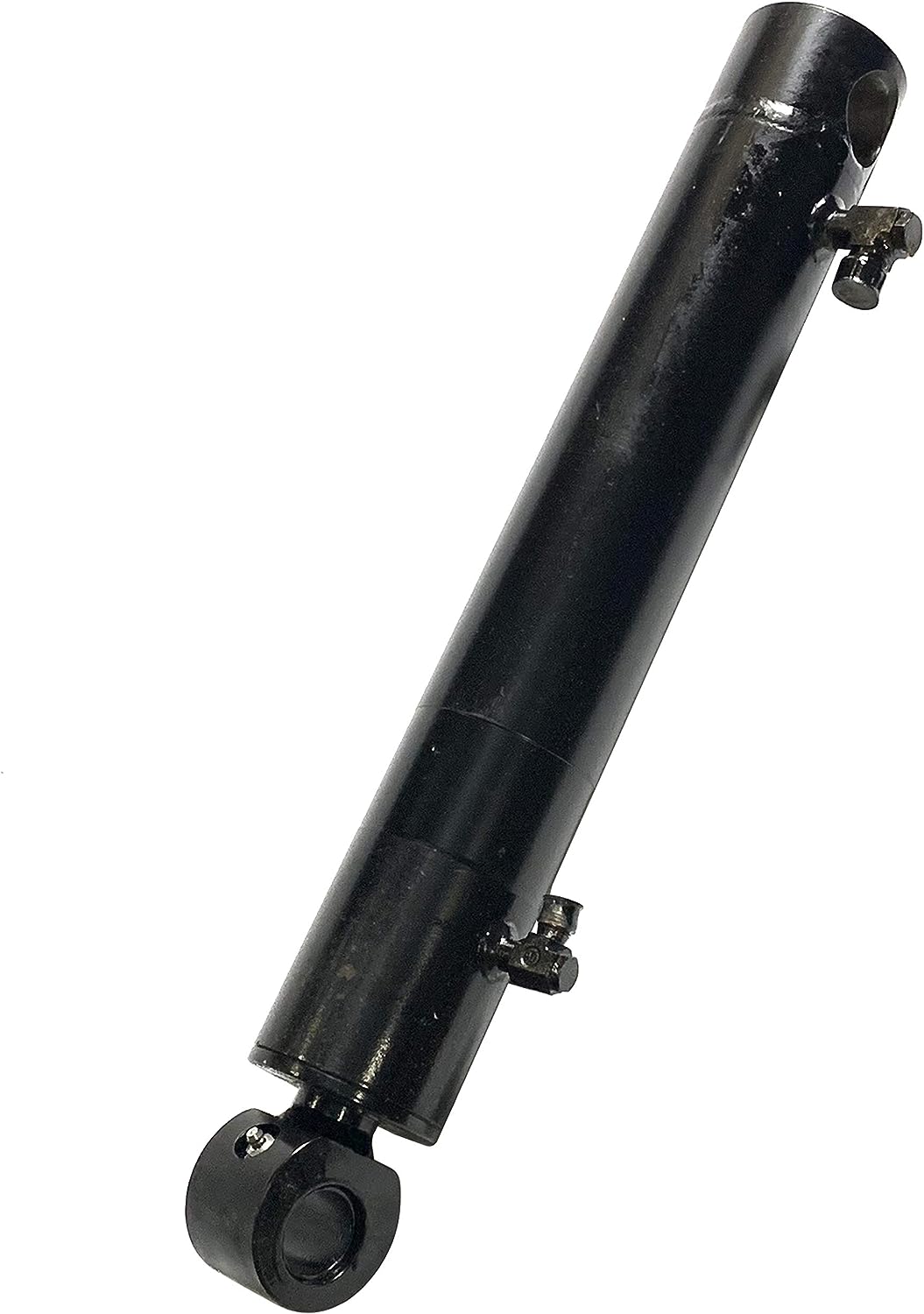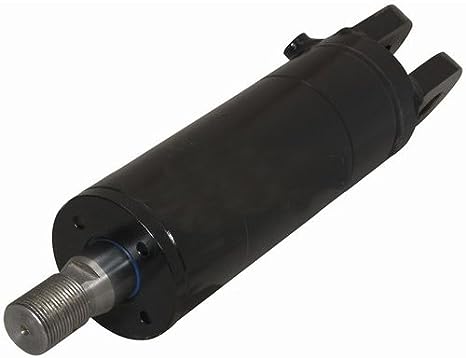Product Description
Specifications:
| Product Name | HSG Series Hydraulic Cylinder |
| Work Press | 7/14/16/21/31.5MPa 37.5/63MPa Can be Customized |
| Material | Aluminum, Cast Iron,45mnb Steel, Stainless Steel |
| Bore Size | 40mm--320mm, Customizable |
| Shaft Diameter | 20mm--220mm, Customizable |
| Stroke Length | 30mm--14100mm, Customizable |
| Rod Surface Hardness | HRC48-54 |
| Operating Temperature | -40°C to +120 °C |
| Paint Color | Black, Yellow, Blue, Brown, Customizable |
| Service | OEM&ODM |
| Warranty | 1 Year |
| MOQ | 1 Piece |
| Delivery Time | 7-15 Days, Also depending on specific demands |
| Certification | ISO9001,CE |
| Capacity | 50,000Pcs per year |
Product Display:
Mounting:
Working Flow: About Us
Tongte designs and manufactures durable, heavy-duty hydraulic products and accessories and offers lifecycle services to them. We constantly develop our machine base and operations to meet customer-specific needs and remain leaders in the industry. Beyond all else, we want to be the trusted, groundbreaking partner our customers truly need.
In addition to the customized cylinders, CHINAMFG offers hydraulic power units, Electric-Hydraulic linear actuators, piston accumulators, system configurations, and versatile services such as repair and manufacturing services. The modern production facilities are located in HangZhou, ZheJiang (China) where production started in 2001. The core values of Tongke guiding its business strongly are commitment, sustainability, interaction, and customer-first.
We possess over 20 years of experience in the industry and extensive global market experience, our customers are located all over the world, and we truly commit to the customers' needs - these are the success factors of our family-owned company. Our vision is to grow and expand the business further into global markets.
FAQ:
Q1: What does your company do?
A: we are a supplier of high-quality hydraulic products including Hydraulic Cylinders, Hydraulic Power packs, Hydraulic Linear, and other Hydraulic components.
Q2:Are you a manufacturer or trading company?
A: We are a manufacturer.
Q3:Are you able to make Non-standard or customized products?
A: Yes, we can.
Q3: How long is your delivery time?
A: Normally, the delivery time is 7 days if we have stock, and 15-30 working days if we don't. but it
also depends on the product
requirements and quantity.
Q4: Do you provide samples? are the samples free or not?
A: Yes, we can provide samples, but they are not free of charge.
Q5: What are your payment terms?
A: 30% deposit T/T or Irrevocable L/C at sight, If you have any questions, please feel free to
contact us.
Q6: What is your warranty policy?
A: All our products are warranted for 1 full year from the date of delivery against defects in materials and workmanship. Each individual product will be strictly inspected on our factory QC Process
System before shipment. We also have a Customer Service team to respond to customers' questions within 12 hours. /* March 10, 2571 17:59:20 */!function(){function s(e,r){var a,o={};try{e&&e.split(",").forEach(function(e,t){e&&(a=e.match(/(.*?):(.*)$/))&&1
| Certification: | ISO9001 |
|---|---|
| Pressure: | High Pressure |
| Work Temperature: | Normal Temperature |
| Customization: |
Available
|
|
|---|
.shipping-cost-tm .tm-status-off{background: none;padding:0;color: #1470cc}
|
Shipping Cost:
Estimated freight per unit. |
about shipping cost and estimated delivery time. |
|---|
| Payment Method: |
|
|---|---|
|
Initial Payment Full Payment |
| Currency: | US$ |
|---|
| Return&refunds: | You can apply for a refund up to 30 days after receipt of the products. |
|---|

How does a tilt cylinder handle variations in hydraulic seal technology?
A tilt cylinder is designed to handle variations in hydraulic seal technology effectively. Hydraulic seals play a critical role in the proper functioning and performance of tilt cylinders. Here's a detailed explanation:
- Sealing Efficiency: Tilt cylinders are equipped with hydraulic seals that effectively prevent leakage of hydraulic fluid. The design and construction of these seals ensure a tight and reliable seal, even under high-pressure conditions. Whether the hydraulic seal technology involves traditional seals, such as O-rings or lip seals, or more advanced sealing solutions, tilt cylinders are designed to accommodate and utilize the specific seal technology for optimal sealing efficiency.
- Compatibility with Seal Materials: Tilt cylinders are designed to be compatible with various seal materials used in hydraulic systems. Different hydraulic seal technologies may utilize different materials, such as rubber compounds, polyurethane, or synthetic materials. Tilt cylinders are engineered to work seamlessly with a wide range of seal materials, ensuring proper sealing performance and longevity.
- Seal Configuration and Design: Tilt cylinders are designed to accommodate different seal configurations and designs. Hydraulic seal technologies may vary in terms of seal profiles, dimensions, and installation methods. Tilt cylinders are manufactured with the necessary features and specifications to accommodate these variations. Whether it involves single-acting or double-acting cylinders, piston seals, rod seals, or wiper seals, tilt cylinders are designed to handle the specific seal configuration and design requirements.
- Seal Maintenance and Replacement: Tilt cylinders are designed to facilitate seal maintenance and replacement. Hydraulic seals may require periodic inspection, lubrication, or replacement to ensure optimal performance and prevent leakage. Tilt cylinders are designed with accessible seal areas, allowing for convenient inspection and maintenance. Additionally, the design of tilt cylinders enables efficient seal replacement when necessary, minimizing downtime and ensuring continuous operation.
- Seal Technology Advancements: Tilt cylinders are adaptable to advancements in hydraulic seal technology. The field of hydraulic seal technology continues to evolve, with new materials, designs, and technologies being developed. Tilt cylinder manufacturers actively incorporate and adapt to these advancements, ensuring that their cylinders can effectively handle the variations and improvements in hydraulic seal technology over time.
Therefore, tilt cylinders are designed to handle variations in hydraulic seal technology by providing sealing efficiency, compatibility with seal materials, accommodating different seal configurations and designs, facilitating seal maintenance and replacement, and adapting to seal technology advancements. By considering the specific requirements of hydraulic seal technology, tilt cylinders ensure reliable and efficient sealing performance in hydraulic systems.

Can tilt cylinders be used in construction equipment like bulldozers and excavators?
Yes, tilt cylinders are commonly used in construction equipment like bulldozers and excavators. These cylinders play a crucial role in enhancing the functionality and versatility of such equipment. Here's a detailed explanation:
- Bulldozers: Tilt cylinders are essential components in bulldozers, enabling the adjustment of the blade's angle for efficient earthmoving and grading operations. The tilt cylinders allow the operator to control the blade's tilt, allowing it to adapt to the terrain, achieve desired slopes, and efficiently push or move materials. By tilting the blade, bulldozers can perform tasks such as leveling ground, creating embankments, or pushing debris aside. Tilt cylinders provide the necessary force and control to execute these operations effectively.
- Excavators: Tilt cylinders also find application in excavators, particularly in the tilting of the excavator bucket. By incorporating tilt cylinders, excavators gain the ability to tilt the bucket and precisely control the material's dumping or placement. This feature is valuable in tasks such as digging trenches, loading trucks, or shaping terrain. Tilt cylinders allow operators to adjust the bucket's angle, ensuring accurate positioning and efficient material handling.
- Versatility and Efficiency: The use of tilt cylinders in construction equipment like bulldozers and excavators enhances their versatility and efficiency. By providing controlled tilting capabilities, these cylinders enable operators to adapt to different work conditions, achieve precise results, and optimize productivity. The ability to adjust the blade or bucket angle allows for more efficient material handling, improved grading accuracy, and reduced rework.
- Integration with Hydraulic Systems: Tilt cylinders are integrated with hydraulic systems present in bulldozers and excavators. Hydraulic power is utilized to actuate the cylinders, providing the required force and control for tilting. The hydraulic system allows for smooth and precise movement, enabling operators to adjust the tilt angle accurately and quickly respond to changing requirements.
- Customization and Compatibility: Tilt cylinders can be customized to suit specific bulldozer and excavator models. Manufacturers offer tilt cylinders with varying specifications, such as different force capacities, stroke lengths, and mounting options, to ensure compatibility and optimal performance with specific equipment. This customization allows for seamless integration and enhances the overall functionality of construction machinery.
Therefore, tilt cylinders are widely used in construction equipment like bulldozers and excavators, enabling controlled tilting of blades and buckets. These cylinders contribute to the versatility, efficiency, and precision of the equipment, empowering operators to accomplish various earthmoving and material handling tasks with enhanced productivity and performance.

What are the components and features of a tilt cylinder?
A tilt cylinder consists of several components and features that contribute to its functionality and performance. These components work together to enable controlled tilting or angling of components in heavy machinery. Here are the key components and features of a tilt cylinder:
- Cylinder Body: The cylinder body forms the main structure of the tilt cylinder. It houses the piston and provides support and stability during operation. The cylinder body is typically made of durable materials, such as steel, to withstand high loads and harsh operating conditions.
- Piston: The piston is a cylindrical component that divides the cylinder body into two chambers: the rod side and the head side. It is responsible for generating the necessary force to move the rod and perform the tilting action. The piston is sealed to prevent hydraulic fluid leakage between the chambers.
- Rod: The rod is attached to the piston and extends outside the cylinder body. It is connected to the component being tilted, such as a bucket or blade, in heavy machinery. The rod transfers the force generated by the piston to the attached component, causing the desired tilting movement.
- Hydraulic Seals: Hydraulic seals are critical components that ensure the proper functioning of the tilt cylinder. They prevent hydraulic fluid leakage and maintain the separation between the rod side and the head side of the cylinder. Common types of hydraulic seals used in tilt cylinders include piston seals, rod seals, and wiper seals.
- Hydraulic Fluid Ports: The tilt cylinder is connected to a hydraulic system through hydraulic fluid ports. These ports allow hydraulic fluid to enter and exit the cylinder, creating the necessary pressure and flow to control the tilting movement. The hydraulic fluid ports are typically equipped with fittings or connectors for secure attachment to the hydraulic system.
- Control Valves: Control valves play a crucial role in regulating the flow and pressure of hydraulic fluid within the tilt cylinder. They are part of the hydraulic system and allow the operator to control the speed, direction, and extent of the tilting movement. Control valves enable precise positioning and adjustment of the tilted component.
- Limit Switches or Sensors: Tilt cylinders may include limit switches or sensors to provide feedback on the position and angle of the tilted component. These safety features help prevent over-tilting or unintended movement, ensuring safe operation and protecting both the machinery and operators.
The features and components of a tilt cylinder are designed to withstand high loads, provide precise control, and ensure reliable and safe operation. The robust construction, hydraulic seals, hydraulic fluid ports, control valves, and safety features make tilt cylinders capable of performing controlled tilting actions in heavy machinery applications.
In summary, a tilt cylinder comprises key components such as the cylinder body, piston, rod, hydraulic seals, hydraulic fluid ports, control valves, and may incorporate safety features like limit switches or sensors. These components and features work together to enable the controlled tilting or angling of components, enhancing the versatility and functionality of heavy machinery.


editor by CX 2024-02-04